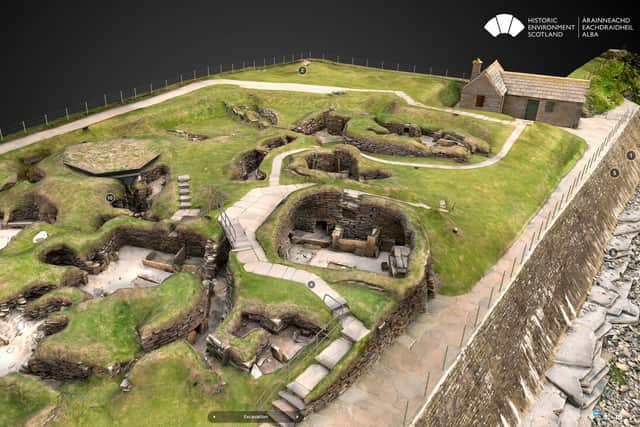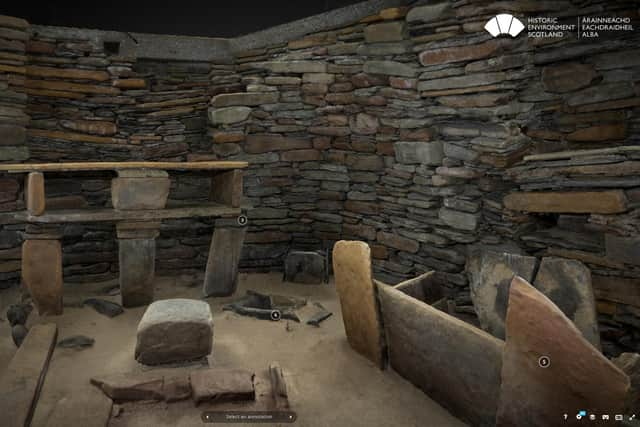Skara Brae: Mysterious structure opened up with new 3D model of 5,000-year-old settlement
A new digital model of the ancient Orkney settlement will allow virtual visitors to explore House Seven, believed to be the earliest structure on the Neolithic site and which is normally closed to the public.
Excavations at House Seven, which sits apart from its neighbours, found two women in a stone-built grave under the right-hand bed and wall section.
Advertisement
Hide AdAdvertisement
Hide AdThe structure is also unusual given it is bolted from the outside, perhaps indicating that it had special significance.


Skara Brae, which is older than Stonehenge and the Pyramids of Giza, has now been modelled in 3D through a process of laser scanning, with data then combined with hundreds of overlapping images of the site.
The model also charts changes to the surrounding coastline caused by climate change, rising sea levels and extreme weather events.
Al Rawlinson, head of digital innovation and learning at Historic Environment Scotland (HES), said: “We’re really pleased to make this 3D model of Skara Brae available, which not only offers an innovative way to access this unique site, but one which also showcases how we are using cutting-edge technology to monitor and maintain our historic environment.
“As we reflect on COP26 and the challenges ahead, we want to demonstrate that in order to protect our past from the impacts of climate change, we must look to the future.


"Digital technology such as this will be a vital tool to help us better understand and manage the climate risks to our historic places and to share their climate stories.”
Skara Brae was discovered more than 170 years ago after a heavy winter storm blew away the sand that had concealed it.
It is considered the best preserved Neolithic settlement in Western Europe, with people first making their home there around 3100BC.
Advertisement
Hide AdAdvertisement
Hide AdSkara Brae was occupied for around 600 years in a series of stone houses built with a similar layout, including a single room with a dresser, central hearth, beds and storage spaces.
It is believed that between 50 to 100 people could have lived there at any one time.
The weather has continued to shape the site, with the new 3D model showing how it has also been protected through the years, not least by a sea wall that was built in the 1920s and which has been extended and repaired numerous times over the decades.
The 3D technology is also being used to laser scan Skara Brae and the surrounding bay every two years, with the data being used to help plan maintenance and record changes with Dynamic Coast, the national coastal mapping project.
Dr Alistair Rennie, Dynamic Coast project manager, said: “Whilst the challenge posed by climate change is stark, new technologies like those deployed by HES, increase our ability to monitor, learn, collaborate and find new approaches to become sea-level wise and adapt to our future climate.”
The 3D model can be viewed on Sketchfab, a platform for 3D and AR modelling.
A message from the Editor:Thank you for reading this article. We're more reliant on your support than ever as the shift in consumer habits brought about by Coronavirus impacts our advertisers.
If you haven't already, please consider supporting our trusted, fact-checked journalism by taking out a digital subscription.
Comments
Want to join the conversation? Please or to comment on this article.
